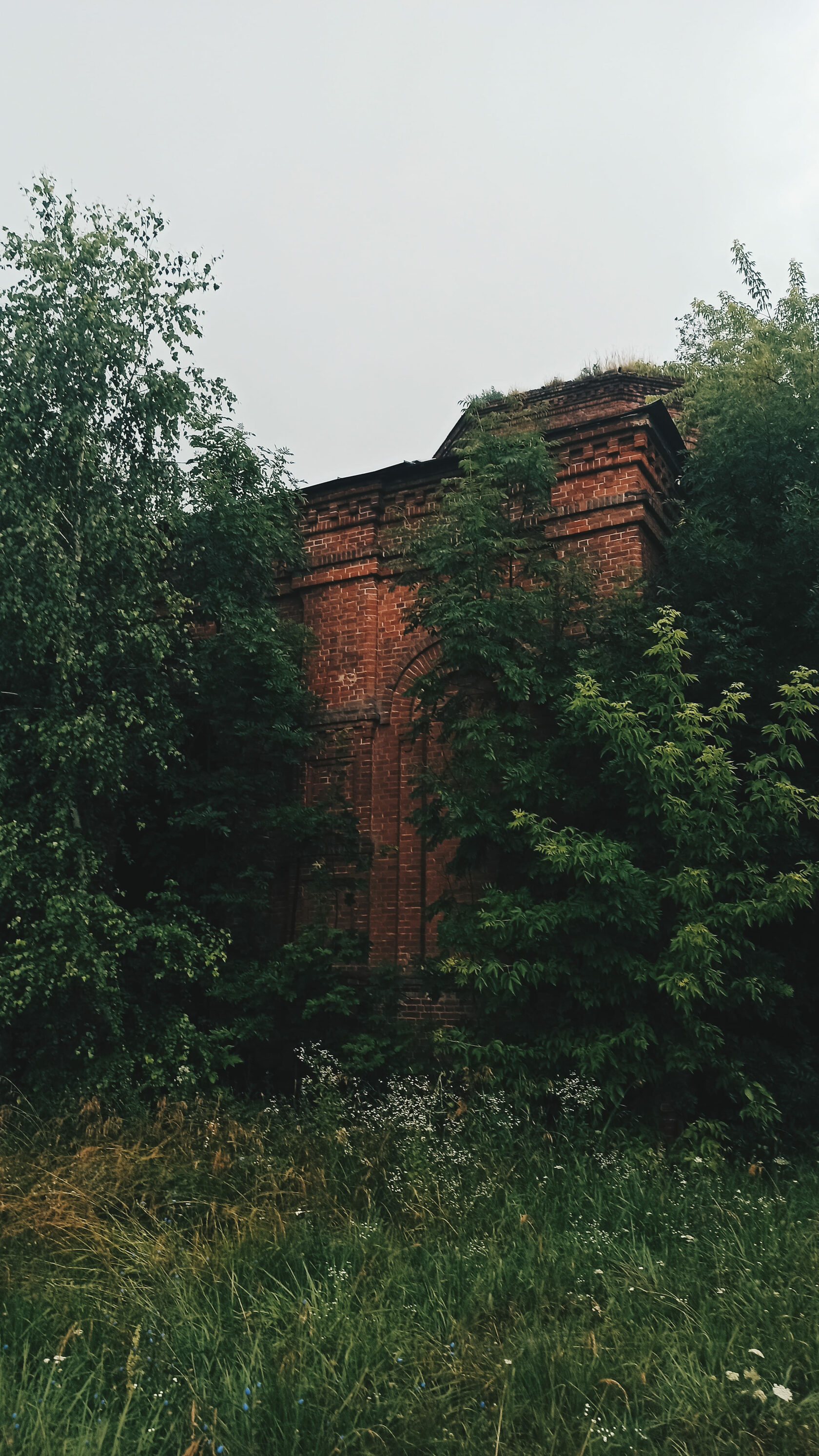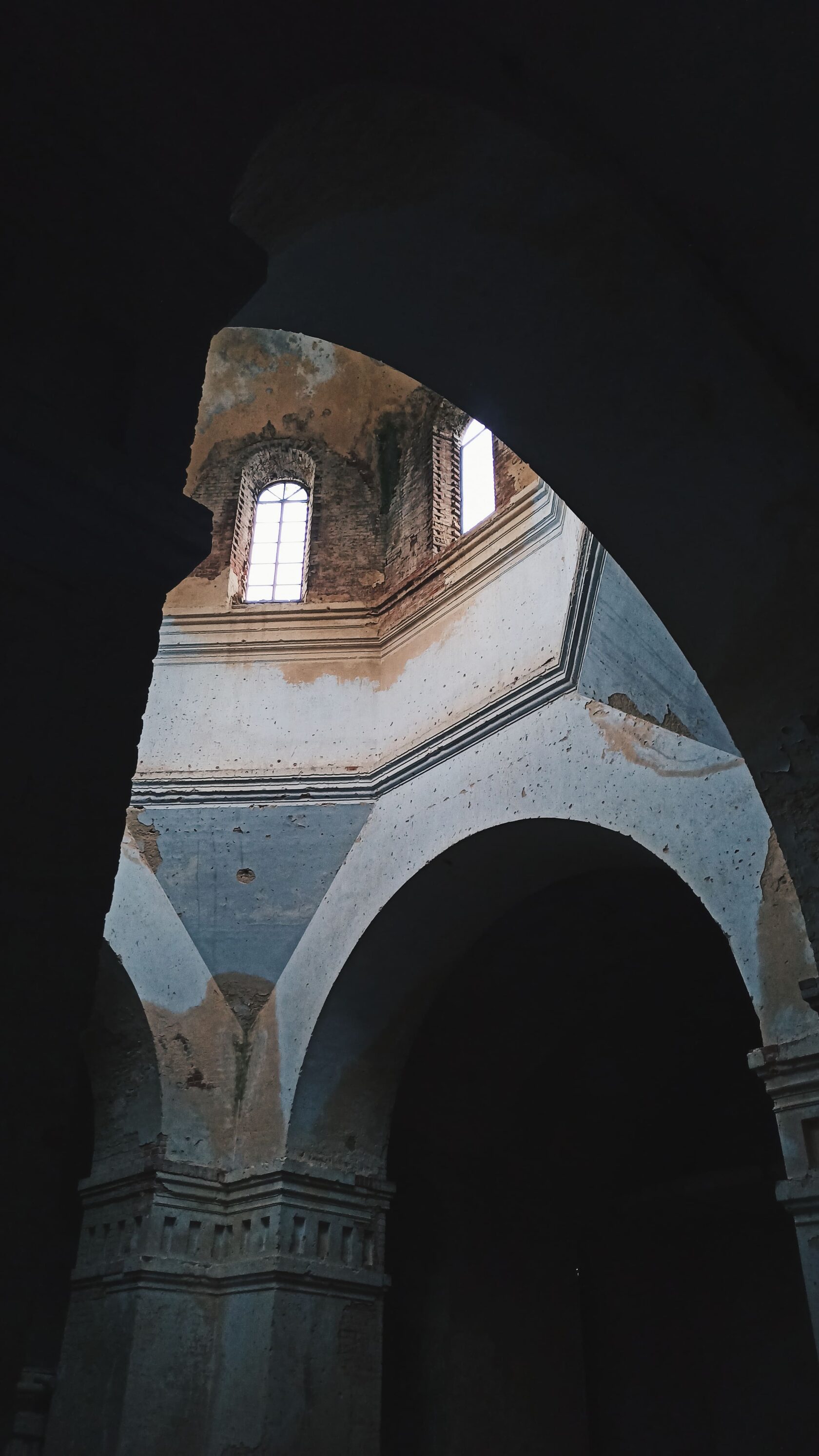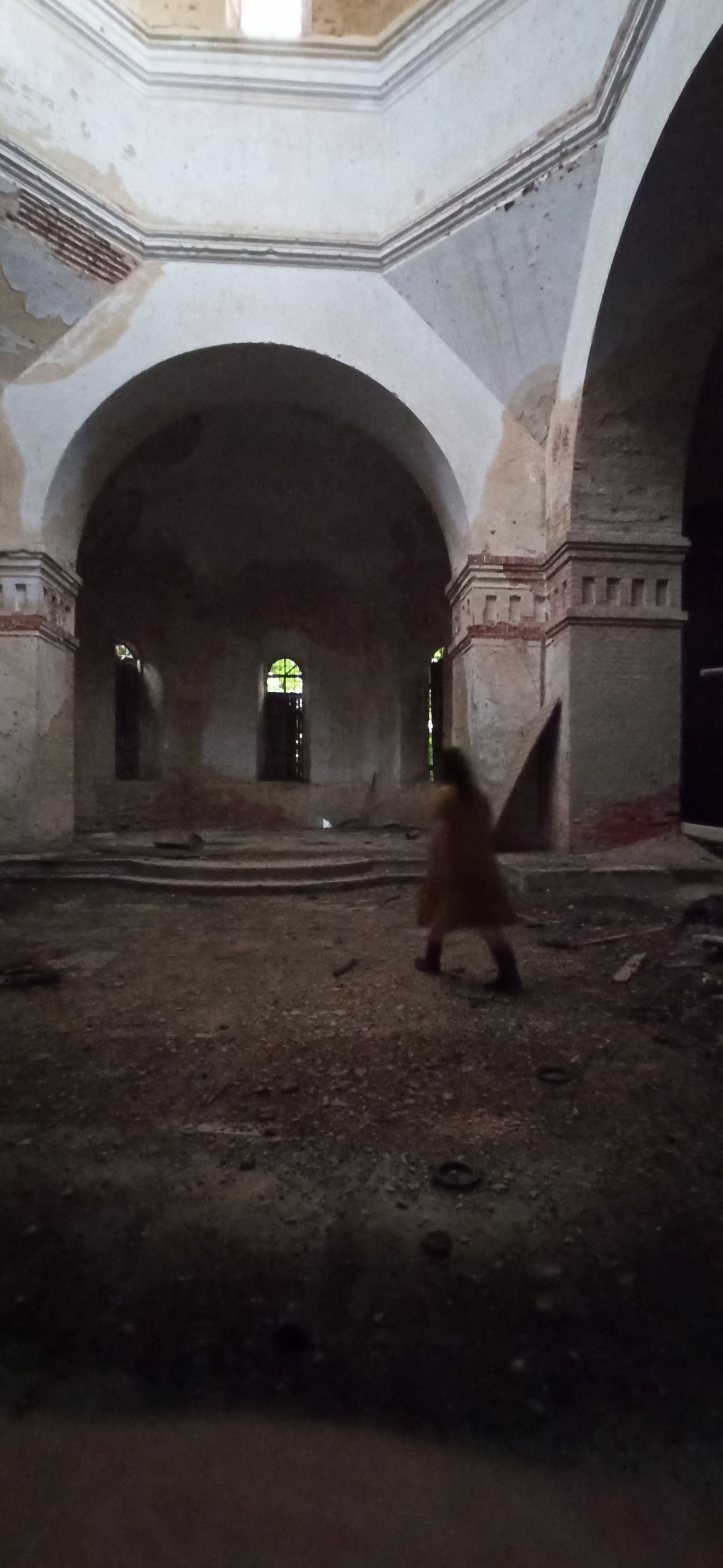site 0
atlas of abandonment
atlas of abandonment
medvedi. pocrova.


1942


This church, known as "Pocrova," is officially named the Church of the Intercession of the Blessed Virgin Mary. It was constructed to celebrate the annual holiday of Madonna on October 14th. Every year, a large market is held near the church on this day. The church is located in the village Medvedi, translated as "bears", in the Bryansk region of Russia, just 3 km from the border with Belarus.
*Церковь Покрова Пресвятой Богородицы


2019


The narrative of this church encapsulates the entire history of 20th century Russia. It was constructed between 1908 and 1912, funded by a philanthropic nobleman and local landowner who cared deeply for the region and its people. The plan was to consecrate the Pocrova in 1914, but the outbreak of the First World War, followed by the revolution, disrupted these plans. During the Soviet era, religion was banned and the church was subsequently closed in the 1930s.

This territory has changed its affiliation with different regions and countries several dozen times since the 14th century

The temple was repurposed as a warehouse for local agricultural enterprises, leading to the dismantling of the bell tower and four small domes, as well as the central dome. The Chernobyl catastrophe brought further devastation. A massive release of radiation resulted in numerous area villages being destroyed by tanks. This included the village where my family lived and my grandmother was born. Medvedi and its church became even more deserted as many people relocated due to the radiation levels. Now, the temple stands desolate, with birds nesting under the dome.










This is my family. They used to live in a nearby village called Nizhnyaya Melnitsa. It was a beautiful place where my mum spent all her summer vacations until the Chernobyl Catastrophe in 1986. Now, this village no longer exists. It's replaced by fields, wetlands, and wildflowers, with no signs of the once prosperous and beautiful village that stood here decades ago.
The village was rather small, so children used to attend school in the larger neighboring villages. One school was located near the Pocrova church, where my great-uncle Vasiliy (pictured above) studied.
The village was rather small, so children used to attend school in the larger neighboring villages. One school was located near the Pocrova church, where my great-uncle Vasiliy (pictured above) studied.
My grandmother Nadezhda, her brother Nikolay, her dad Pyotr, her sister Valentina
My great-grandmother Matryona and her son Vasiliy
My mother Svetlana an the age of 7 months and my grandmother Nadezhda
My great-grandmother Matryona and her son Vasiliy

The Chernobyl catastrophe and various narratives of human history have profoundly transformed the area, including the Pocrova church. It's quite miraculous that this building survived the revolution, World War II, and the Soviet era, only to become ruins in the middle of nowhere. Now, it is brimming with wild grass, birds, wind, and non-human life. To me, this scene is exceptionally poetic and beautiful. This place has transitioned from being a "human place" to a "nature place," assuming we define humans solely as a social construct.
"Beauty is how objects end. Beauty is death." That is what philosopher Timothy Morton said. But also through this death, we can see rebirth and repurpose of the narratives of objects and spaces. And this process is fascinating as well.
"Beauty is how objects end. Beauty is death." That is what philosopher Timothy Morton said. But also through this death, we can see rebirth and repurpose of the narratives of objects and spaces. And this process is fascinating as well.




I have chosen these wildflowers as symbols of this place. They are Cichórium and Matricária. Both are beautiful and independent, symbolizing the never-ending life that persists in this territory, even if it undergoes complete changes.



This place is a living, evolving entity – a processual teacher that provides valuable insights into the impact of human actions on our surroundings and how these actions subtly yet profoundly transform our reality, often without our conscious realization.

With human intervention in everything, it becomes more and more difficult to understand where is the border between untouched and modified. With contemplation and attentive and careful look, human beings can follow and investigate new and new interconnections, this web of causal relationships between agents – humans, birds, mold, grass, flowers, and bugs. And between narratives – historical patterns, personal family stories, and religion ideas.
This man-made structure gradually transformed into other-than-human space devoid of human connection as its original meaning and value were lost. Memory uncovers various layers of its history, and different narratives have changed the building's significance – from sacred to forbidden, from utilitarian to deserted. It's noteworthy that birds have inhabited this place throughout the entire history of the church, and wild grass has grown inside for a longer period than the building was in use by people.
This man-made structure gradually transformed into other-than-human space devoid of human connection as its original meaning and value were lost. Memory uncovers various layers of its history, and different narratives have changed the building's significance – from sacred to forbidden, from utilitarian to deserted. It's noteworthy that birds have inhabited this place throughout the entire history of the church, and wild grass has grown inside for a longer period than the building was in use by people.



This story, mirroring the wildflowers, is a testament to the resilience of life and undeniable power of transformation. This place, once a symbol of faith and community, now stands as a monument to change and the enduring power of nature. Even in the face of human abandonment, it continues to flourish and thrive in its own way, providing a home for birds and a canvas for wildflowers.





pocrova.